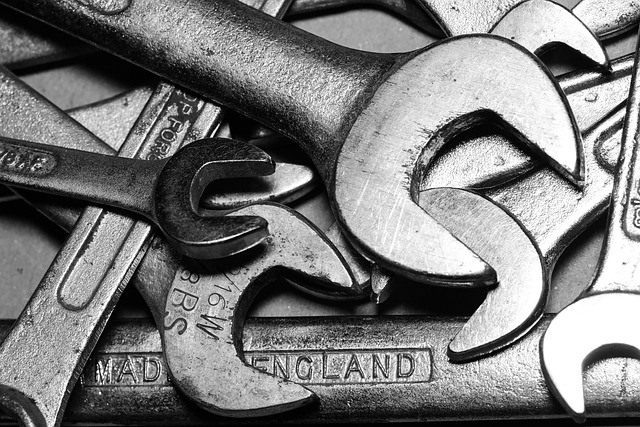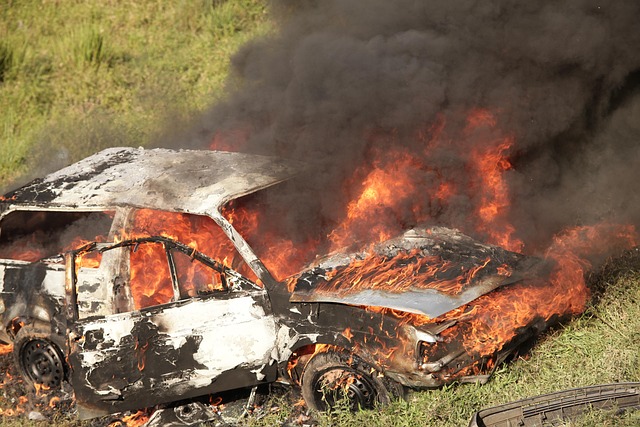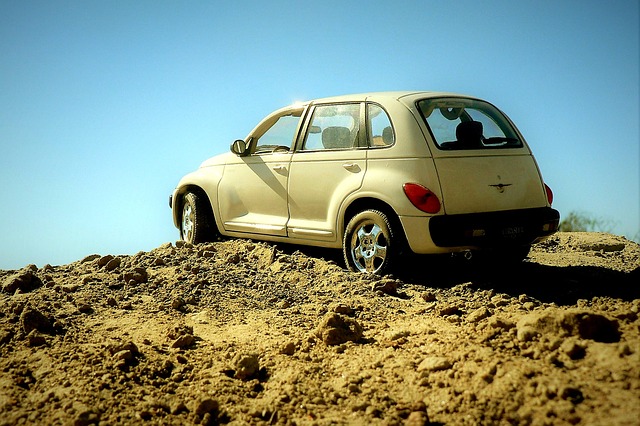Preparing for Your Car Collision Repair: Assessing Damage and Expectations
Before scheduling a car collision repair, conduct a thorough visual inspection of your vehicle to do…….
Car collision repair is a critical aspect of the automotive industry, focusing on restoring vehicles damaged in accidents to their pre-collision condition. It involves a complex interplay of skilled labor, advanced technology, and stringent safety standards. As road safety continues to be a global priority, efficient and effective collision repair processes are essential to ensure drivers’ well-being and reduce vehicle downtime. This article aims to provide an in-depth exploration of car collision repair, its evolution, impact, and future prospects, offering valuable insights for professionals, enthusiasts, and anyone interested in the intricate world of automotive restoration.
Car collision repair is a specialized service that involves the meticulous reconstruction and refurbishment of vehicles after a collision. It encompasses a range of procedures, from assessing damage and disassembling components to precise repairs and final quality control checks. The primary goal is not only to restore the vehicle’s structural integrity but also to ensure it meets safety standards and returns to its original performance levels.
The process begins with a thorough inspection to identify the extent of damage, which may include cracks in the body panel, frame misalignment, damaged or missing components, and internal mechanical issues. Skilled technicians utilize advanced tools and diagnostic equipment to assess the vehicle’s condition accurately. Once the damage is assessed, a repair plan is devised, outlining the steps required for restoration.
Repairs can range from simple body panel repairs, such as dent removal and painting, to complex structural adjustments and engine/transmission overhauls. Modern collision repair facilities employ robotic welding systems, computer-aided design (CAD) software, and laser measurement tools to ensure precision and accuracy in every step of the process.
Car collision repair is a global industry with significant economic and social implications. According to a report by Market Research Future (MRFR), the global car collision repair market is projected to reach USD 364.5 billion by 2027, growing at a CAGR of 4.7% from 2020 to 2027. This growth can be attributed to several factors:
Increasing Vehicle Penetration: With rising road networks and an expanding global automotive fleet, the number of vehicles on the road increases daily, leading to a higher frequency of collisions.
Stricter Safety Regulations: Governments worldwide are implementing more stringent safety standards, pushing vehicle manufacturers to build safer cars and encouraging collision repair facilities to employ advanced repair techniques.
Technological Advancements: The adoption of cutting-edge technology in collision repair, such as 3D printing, robotic systems, and advanced paints, is driving market growth and improving repair quality.
The industry exhibits regional variations, with North America and Europe currently leading the market due to their well-established automotive industries and stringent safety norms. However, Asia-Pacific is expected to witness significant growth, driven by rising vehicle ownership and improving collision repair infrastructure in countries like China and India.
The car collision repair industry plays a pivotal role in economic systems worldwide, influencing various sectors:
| Sector | Impact |
|---|---|
| Automotive Manufacturing | Collision repair facilities are integral to the automotive supply chain, as they contribute to the lifecycle cost of vehicles by extending their operational lives. Repaired and refurbished cars can be resold, reducing the need for new vehicle production. |
| Insurance Industry | The industry is closely linked to insurance claims processing. Efficient collision repair services can expedite claim settlements, reduce insurance costs, and enhance customer satisfaction. |
| Job Market | Collision repair shops provide employment opportunities, including skilled technicians, body shop workers, and management roles. According to the U.S. Bureau of Labor Statistics, employment in automotive body and repair shops is projected to grow 5% from 2019 to 2029. |
| Economic Growth | The industry contributes to gross domestic product (GDP) through direct and indirect impacts. In countries with a high density of collision repair facilities, it can stimulate local economies. |
Technology has been instrumental in transforming car collision repair, enhancing efficiency, accuracy, and safety. Some significant advancements include:
Robotic Welding: Automated robotic arms are now used for precise welding, reducing the time required for body panel repairs and improving consistency. This technology is particularly valuable for complex panel configurations.
Computer-Aided Design (CAD) Software: CAD systems enable technicians to create digital models of vehicles, facilitating accurate damage assessments and repair planning. These tools also assist in designing custom parts and ensuring precision during fabrication.
3D Printing: Additive manufacturing techniques allow for the rapid production of custom parts, reducing lead times and costs. This technology is particularly useful for hard-to-find or unique components.
Advanced Paints and Finishes: Modern collision repair shops use advanced paint systems that offer superior color matching and durability. These paints also include protective coatings to enhance the vehicle’s exterior finish.
Digital Imaging and Analysis: High-resolution cameras and computer vision systems are employed for detailed damage assessment, ensuring no hidden issues go unnoticed. This technology aids in documenting repairs for insurance claims and quality control.
The car collision repair industry is subject to various policies and regulations aimed at maintaining safety standards and consumer protection. These include:
National and Regional Safety Norms: Many countries have established strict guidelines for vehicle safety, including crash testing and minimum structural integrity requirements. These norms dictate the repair standards that collision centers must adhere to.
Environmental Regulations: With a growing focus on sustainability, regulations are in place to minimize environmental impact during repair processes. Proper disposal of hazardous materials and use of eco-friendly products are essential considerations.
Consumer Protection Laws: These laws protect customers’ rights during the collision repair process, ensuring transparency in pricing, work quality, and insurance claim handling.
Industry Associations: Organizations like the Association for Enterprise and Resources (AER) in Europe and the National Automobile Body Repair Association (NABRA) in North America set industry standards and provide training resources to maintain high workmanship.
Despite its advancements, the car collision repair industry faces several challenges and criticisms:
Skill Gap: The industry struggles with a shortage of skilled technicians due to the specialized nature of the work and changing educational trends. Addressing this gap through training programs and apprenticeships is crucial for maintaining quality standards.
Cost of Technology: Implementing advanced technologies like robotics and 3D printing can be expensive, posing a challenge for smaller repair shops. Government incentives and industry collaborations can help overcome these barriers.
Environmental Concerns: The use of certain chemicals and processes in collision repair may have environmental implications. Adopting eco-friendly practices and materials is essential to address these concerns.
Insurance Bureaucracy: Complex insurance claim procedures and paperwork can lead to delays, causing frustration for customers and repair shops alike. Streamlining these processes is necessary for improved customer service.
In Japan, the city of Tokyo has developed a unique cluster of collision repair facilities known for their precision and innovation. These shops have embraced advanced robotics and CAD systems, resulting in exceptional repair quality and rapid turnaround times. The cluster’s success lies in its focus on continuous improvement, collaboration among members, and adherence to strict environmental standards. This case highlights the benefits of specialized clusters in driving industry excellence.
Several European countries have initiated green repair programs to promote sustainable collision repair practices. For instance, Germany’s “Green Repair” campaign encourages the use of eco-friendly materials and efficient energy management systems in repair shops. These initiatives have led to reduced environmental impact without compromising quality. The case demonstrates that sustainability can be a competitive advantage and a responsible business practice.
A leading collision repair network in North America has successfully implemented digital transformation strategies, including cloud-based management systems and mobile app capabilities. This digital overhaul improved communication with customers, streamlined administrative tasks, and enhanced data analytics for better decision-making. The case underscores the power of technology integration in modernizing collision repair operations.
The car collision repair industry is poised for further growth and innovation, driven by emerging technologies and changing consumer expectations. Here are some potential areas of focus:
Autonomous Vehicles and Repair: As autonomous vehicles gain traction, the industry will need to adapt to their unique repair requirements. Specialized equipment and training will be necessary to address advanced safety systems and complex electrical architectures.
Advanced Materials: The adoption of lightweight materials like carbon fiber composites and advanced aluminum alloys will continue to shape the industry. These materials present challenges in repair but also offer opportunities for innovative techniques and processes.
Predictive Maintenance: Utilizing IoT (Internet of Things) devices and data analytics, collision repair facilities can move towards predictive maintenance, identifying potential issues before they become major repairs. This approach can optimize operational efficiency and reduce downtime.
Mobile Collision Repair Services: On-demand mobile repair services are gaining popularity, offering convenience to customers. This trend may lead to the development of portable repair equipment and remote diagnostics tools.
Artificial Intelligence (AI): AI has the potential to revolutionize collision repair by automating complex tasks, improving damage assessment, and providing personalized repair recommendations. AI-driven systems can enhance efficiency and customer satisfaction.
Car collision repair is a dynamic industry that plays a critical role in ensuring road safety and supporting the global automotive ecosystem. From its intricate processes to technological advancements, the field continues to evolve, meeting the challenges of an ever-changing automotive landscape. As we look ahead, the industry’s focus on sustainability, digital transformation, and advanced materials will shape the future of car collision repair, making it more efficient, effective, and environmentally conscious.
Q: How do I choose a reputable car collision repair shop?
A: Look for shops with proper certifications, positive customer reviews, and transparent pricing. Check if they use advanced technologies and have experienced technicians. Reputable shops will also provide guarantees and aftercare services.
Q: What should I expect during the collision repair process?
A: The process begins with an inspection, followed by a detailed repair plan. You’ll receive updates on the progress, and once complete, a quality assurance check is conducted. Ensure the shop provides clear communication and keeps you informed throughout.
Q: Are there any environmental concerns I should be aware of?
A: Yes, collision repair facilities must adhere to environmental regulations. Look for shops that use eco-friendly materials, proper disposal methods, and have sustainable practices in place to minimize their ecological footprint.
Q: Can I get my car repaired while it’s still under warranty?
A: It depends on the terms of your warranty. Some manufacturers allow for certain repairs during the warranty period, but others may require you to use their official service centers. Always check with your manufacturer or insurer before proceeding with any repair work.

Before scheduling a car collision repair, conduct a thorough visual inspection of your vehicle to do…….

Safety inspections are a vital step in car collision repair, ensuring vehicles meet pre-accident sta…….

Car collision repair goes beyond visible fixes to ensure structural safety. Damage assessments lead…….

Repairing luxury vehicles like Mercedes Benz demands specialized car collision repair services. It i…….

A Car Collision Repair Estimate offers vehicle owners a clear view of restoration costs, facilitatin…….

After a car collision, specialized car collision repair services are vital for safe vehicle restorat…….

Before any car collision repair, a meticulous assessment is crucial to identify both visible and hid…….

Certified technicians are vital for exceptional car collision repair, offering specialized training…….